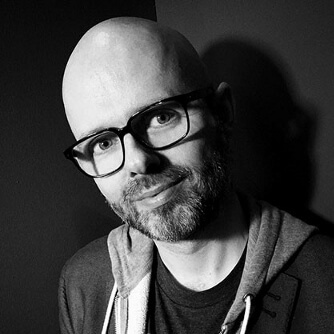Applied thinking expert at the Thought Expansion Network
View Author Profile
Opinions
What Can Man’s Best Friend Teach Us About Good Ideas?
Unsatisfied with your business' approach to innovation? A dog walk could be what you need.

I’ve just spent a couple of days with a friend who’s got a new puppy. This cute little thing is a cross between an Airedale and a Jack Russell. It’s cute, it’s bold and it’s full of playful curiosity. It made me really happy that humans invented the dog.
You may not think of the dog as a human invention. But it very much is. And historians can even trace the origin of the dog to somewhere in Belgium about 30,000 years ago.
That’s when humans took control of which wolves were allowed to breed with other wolves, thus creating something that would never have existed in nature. In the intervening years, we’ve become so successful at it that we now have about 240 recognised breeds, from the towering Great Dane to the celebrity handbag-rat.
We’ve created dogs for specific uses, for aesthetic reasons and for companionship. And there’s a lot the world of innovation can learn from how we’ve done it.
Innovation is in a bad way
Most CEOs believe that innovation is pretty important to the future of their business. In fact, a couple of years ago McKinsey stated that 86% of them believed exactly that. Yet the same study showed that only 6% of CEOs are satisfied with their company's innovation effort.
I’ll let that sink in.
6%.
We’re not even talking about being delighted here - we’re only talking about being satisfied. That’s pressing the middle button when you’re asked how good your experience was going through airport security. The other 94% are hitting the red unhappy face. And I don’t think the green smiley face is getting much action at all.
So let’s talk about dogs again.
We’ll never reach the ideal dog
Getting to the Pekingese was a long journey. It didn’t happen by saying we wanted a Pekingese and then having a particularly successful mating between two wolves. Instead, it’s the result of thousands of iterations and applied human effort. It’s been an ongoing process that’s still going today.
Businesses need to adopt a similar approach if they want to get the most out of innovation.
However, most organisations are based on static processes. Change is seen as a risky, costly, inconvenience. So their approach to innovation tends to be about coming up with a slightly different static process that can displace their current one.
Or a slightly different product that they’ll stick with for a while. Businesses like to wait until it’s too dangerous to simply stand still and then make a leap out of desperation and necessity. It’s uncomfortable, costly and loaded with risk.
On the other hand, the most successfully innovative companies have innovation embedded in their organisation. Adapting to change is an ongoing process. And the leadership are focused on constant movement rather than static optimisation. They understand that you never arrive at the ideal company, it’s only ever your latest iteration.
Embrace unexpected results
Do you think anyone ever set out to create the Chihuahua? That several millennia before the invention of the handbag, they had the vision for a tiny, boggle-eyed mutt that could fit inside it? I doubt it. I think dog breeds came around by spotting unexpected results.
People spotted a dog with a fluffy tail and thought “I like that” so they bred it with another dog with a fluffy tail. Or they spotted extra muscle mass. Or a desirable temperament. Or an attractive face. Or a diminutive size.
Our incredible variety of dog breeds are the result of us embracing the unexpected and then selecting for it.
Businesses tend to be pretty awful with unexpected results. If something doesn’t give them the result they were looking for, they categorise it as a failure. And, hence, it becomes a failure because they fail to learn from it and fail to improve what they’re doing based on the knowledge it gives them.
One of the things I like to do with clients early on is help them build a learning loop into their system.
Whatever the results are of any activity, they sit down and interrogate it to find out what worked, what didn’t, what they’d do differently next time, what skills they need to pick up and lots of other things. They turn these lessons into recommended actions for the organisation.
It is then the management’s responsibility to put these actions into place. That’s how an organisation keeps improving. That’s how they get better at innovation. That’s how they get to more and bigger successes.
Single decision makers
Growing up in the UK in the 1970s, my family used to watch the TV show “One Man and his Dog”. It involved a shepherd in a flat cap instructing his dogs to get a flock of sheep into a pen in the fastest possible time.
The shepherd used a combination of shouts and whistles to control the dogs and it was a lot more compelling than it sounds!
The thing to note is that the show wasn’t called “A Committee of Experts and their Dog”. It was one man (these were in the days before equality was even thought of).
Most companies have a tortuous process for ideas to go through. Multiple decision makers with different priorities get involved to give feedback according to their agenda. Status meeting after status meeting stops any momentum and turns the process into a slog.
And the most important leaders only get involved at the end, giving feedback at the most harmful and expensive stage of the process. It’s a wonder any ideas get through at all.
I find that the best way is to remove the meetings, shorten the process and get to a prototype as quickly as possible. And to assign one person to be the ultimate decision maker. They set the vision at the start along with the leadership team.
And they have the right to veto everyone else’s feedback. As long as everyone understands that this is the way things need to work, the process is a lot smoother and the end result is a lot better. Even democracies need to be run by a leader.
Innovating innovation
If you’re ruthlessly loyal to your existing innovation approach, you can take comfort that you’re still in the majority: the 94% majority of dissatisfied CEOs.
But if you want to make some changes that are going to get you into the illustrious 6% club you could do worse than go for a walk. With a dog, of course. And a notebook to write down what you learn.
Dave Birss is a speaker, author and one of the founders of the Fast Forward Forum. His book ‘How To Get To Great Ideas’ and the ‘Fast Forward Files’ are both available to buy in the UK.
Most read in Opinions
Trending articles on Opinions
Top articles on Minutehack
Thanks for signing up to Minutehack alerts.
Brilliant editorials heading your way soon.
Okay, Thanks!


